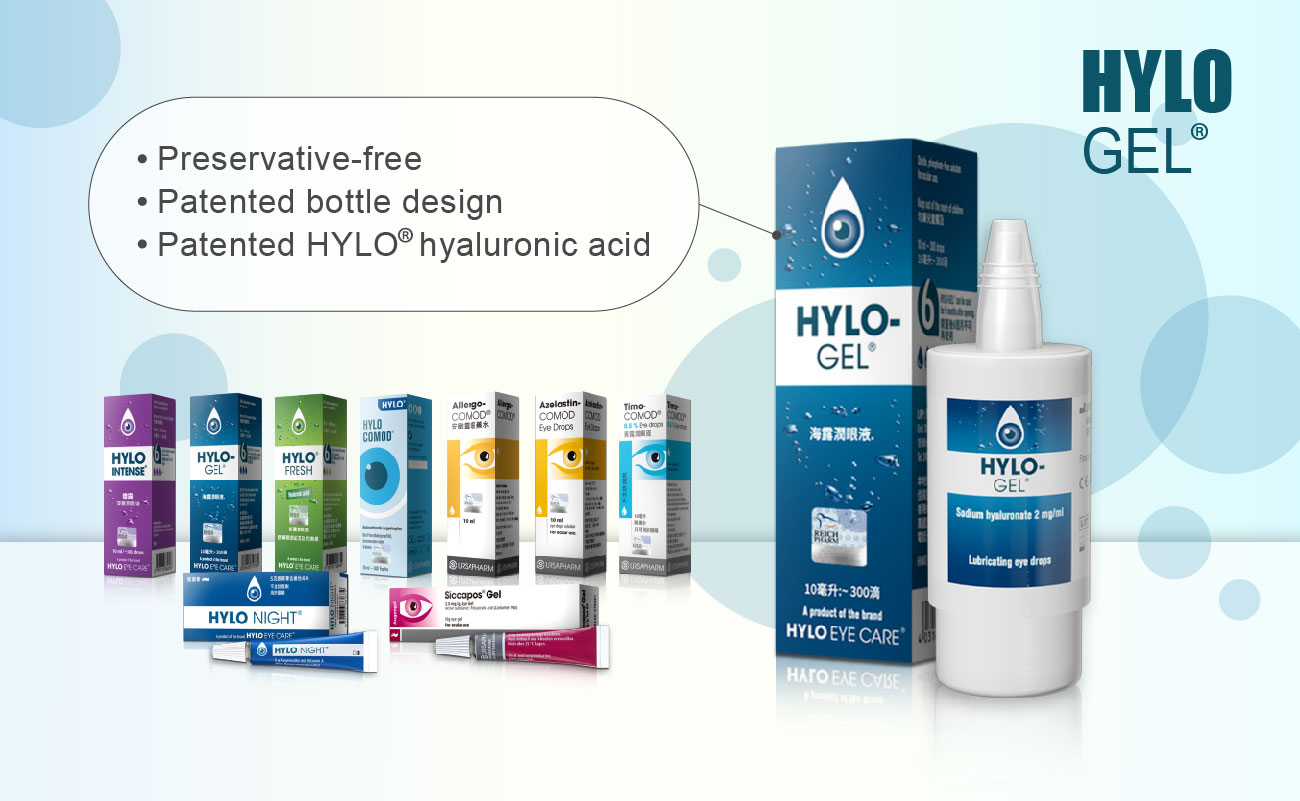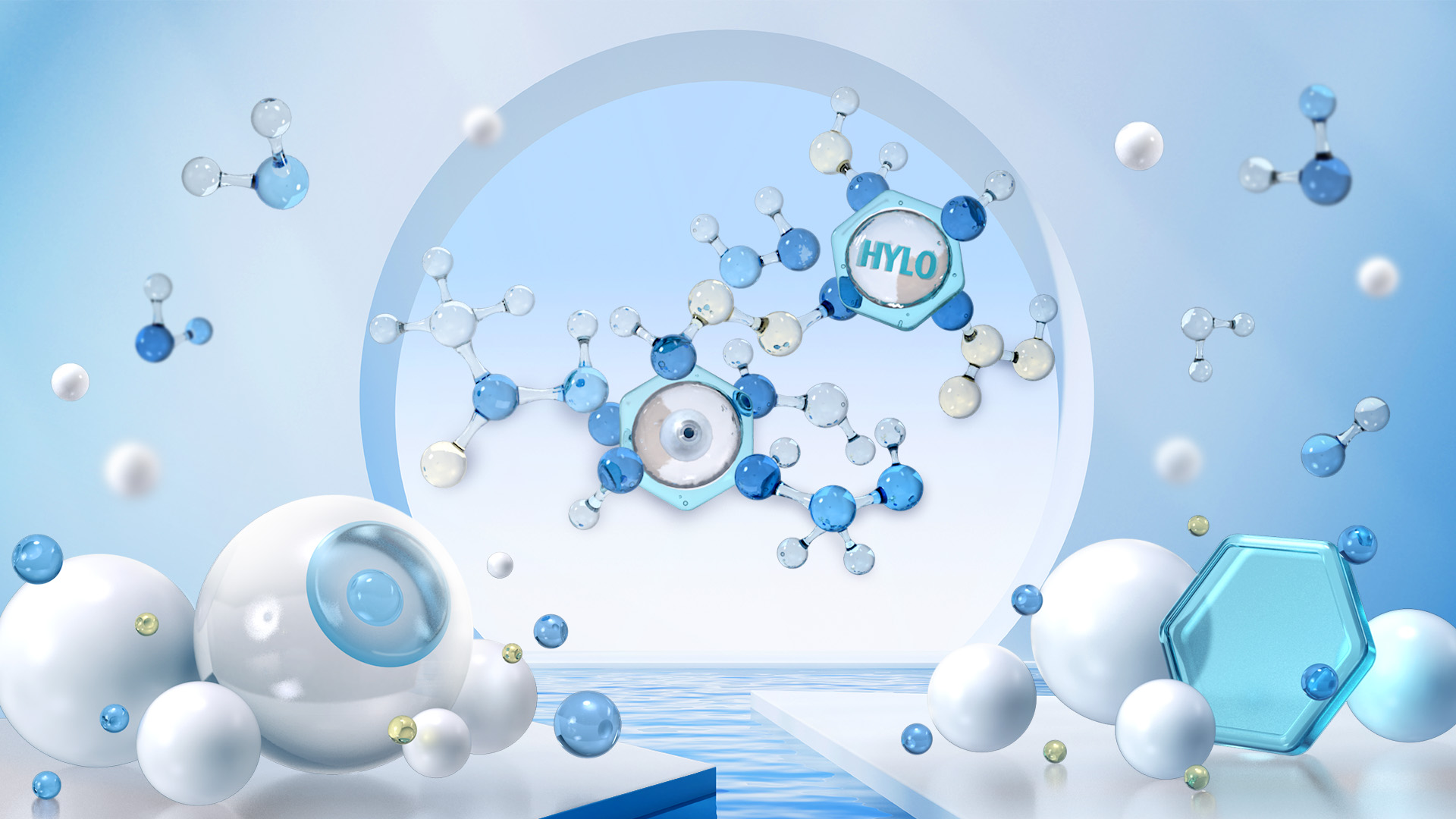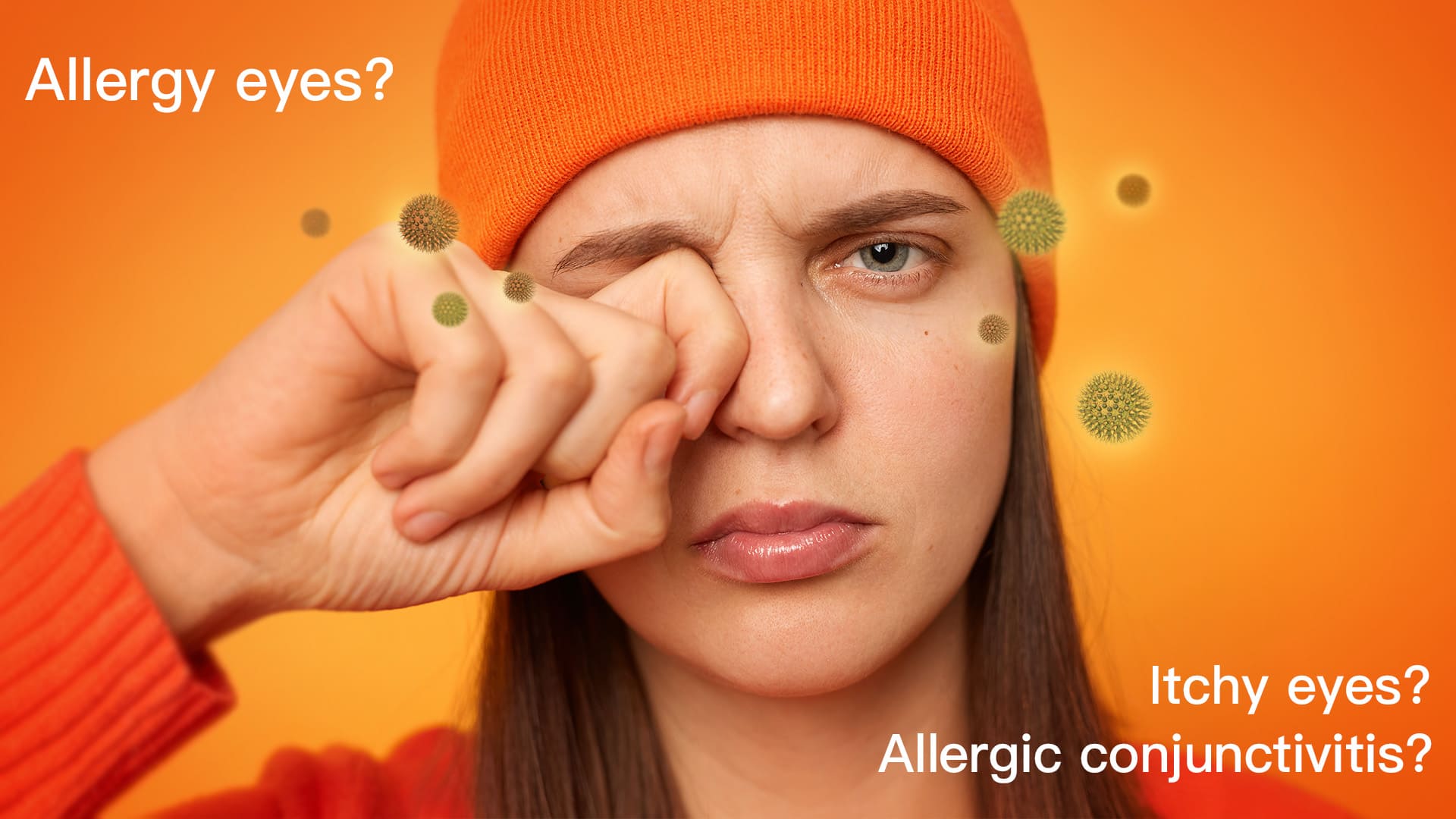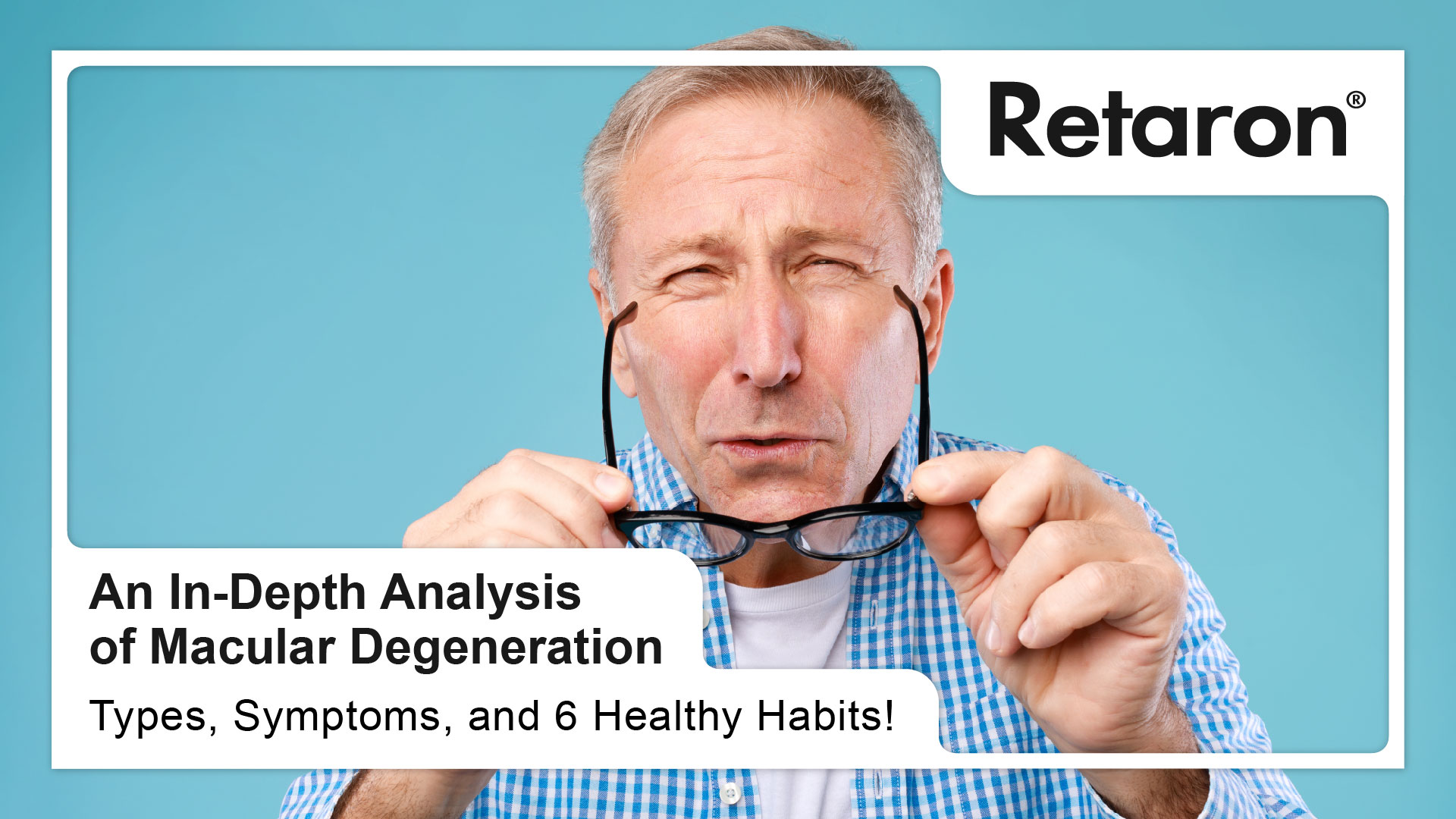What is Hyaluronic Acid?
Hyaluronic acid is a glycosaminoglycan known for its high viscosity, water retention, and lubricating properties. It is widely present in the human body, especially in the skin, joints, and eye tissues.
Hyaluronic acid helps lock in moisture and maintain elasticity in the skin; it acts as a lubricant to reduce friction in joints; it can improve dry eye syndrome in the eyes. Tear film stability helps heal the wound after surgery. Hyaluronic acid is a linear polymer composed of repeating disaccharide units. Its molecular structure contains numerous hydrophilic groups, giving it water-bonding properties.
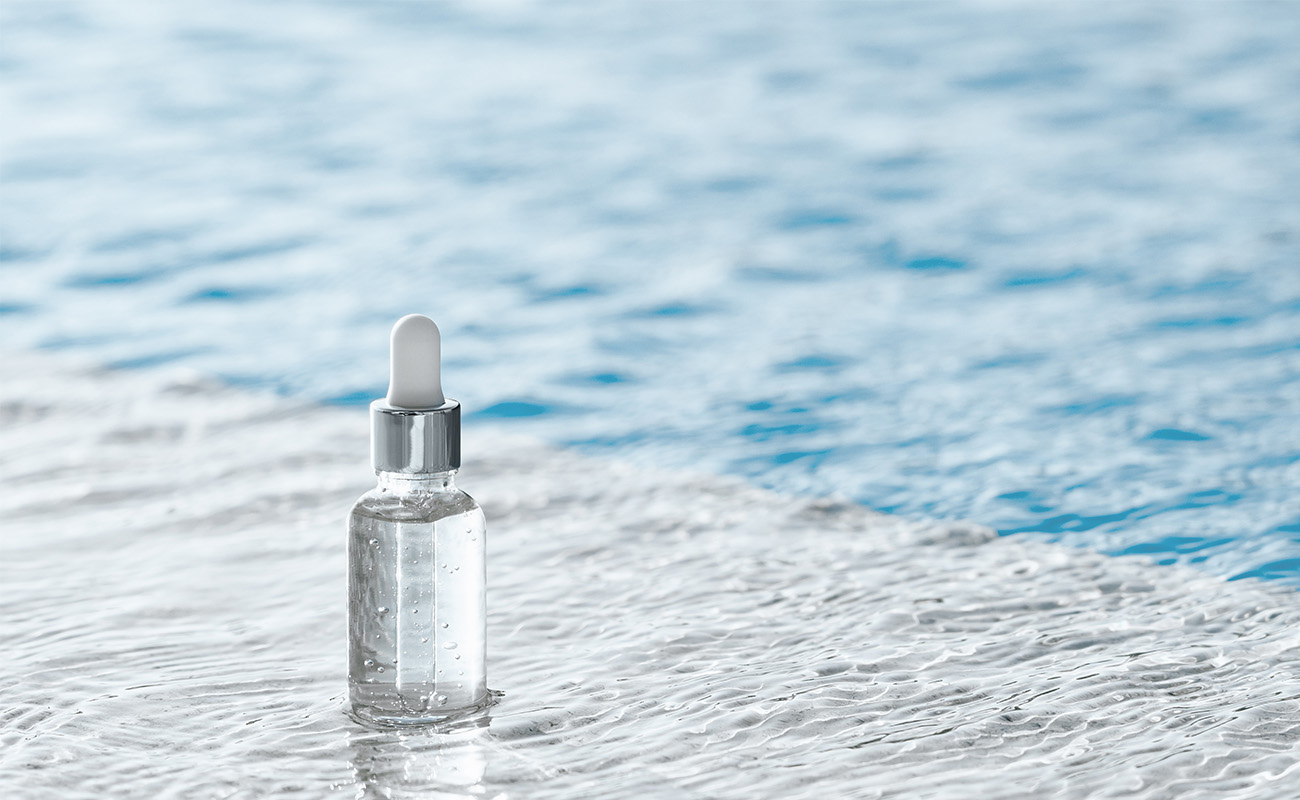
Applications of Hyaluronic Acid
Hyaluronic acid has a wide range of applications, primarily in the following areas:
- Cosmetic: Hyaluronic acid can be injected into the skin to fill wrinkles, smooth depressions, and enhance features such as lips and nose. Orthopedics: Hyaluronic acid can treat osteoarthritis as an intra-articular injection to provide lubrication and cushioning.
- Ophthalmology: Hyaluronic acid can treat dry eyes as an artificial tear substitute.
- Skincare: Hyaluronic acid can be incorporated into skincare products for moisturizing and anti-aging effects.
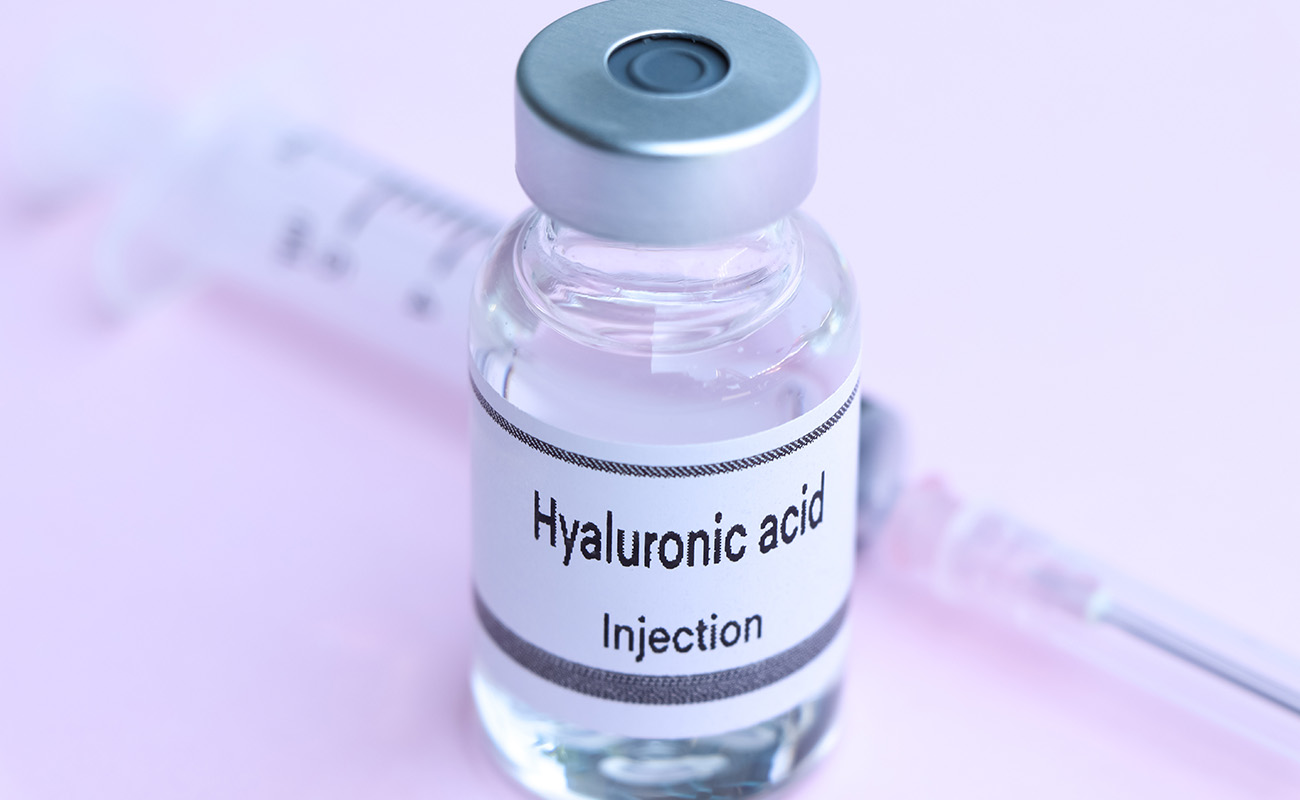
The Efficacy of Hyaluronic Acid in Dry Eye Syndrome
Hyaluronic acid is known for its high viscosity, water retention, and lubricating properties. In the eye, it is an essential component of tears, helping to maintain moisture on the surface of the eyeball and prevent evaporation. Dry eye syndrome is a common ocular condition characterized by dryness, pain, burning sensation, and fatigue. It may result from inadequate tear production, rapid evaporation, or abnormal tear composition.
Hyaluronic acid offers the following benefits in managing dry eye syndrome:
- Moisturizing:
Hyaluronic acid can absorb water up to 1000 times its weight, helping keep the ocular surface moist and preventing dryness. - Lubrication:
Hyaluronic acid acts as a lubricant, reducing friction on the ocular surface and alleviating dryness. Stimulation of tear production: Hyaluronic acid can stimulate tear gland secretion, increasing tear volume. - Anti-inflammatory effects:
Hyaluronic acid has anti-inflammatory properties, helping to alleviate inflammation associated with dry eye syndrome.
Unique Features of HYLO® Hyaluronic Acid
Unlike typical hyaluronic acid, HYLO® hyaluronic acid is obtained from biotechnological synthesis. It is filtered and purified to select only long chains of hyaluronic acid with a molecular weight between 1.5 and 3.5 million Daltons. Due to its enormous molecular weight and length compared to typical hyaluronic acid, it provides more effective and longer-lasting moisturizing and lubricating effects.
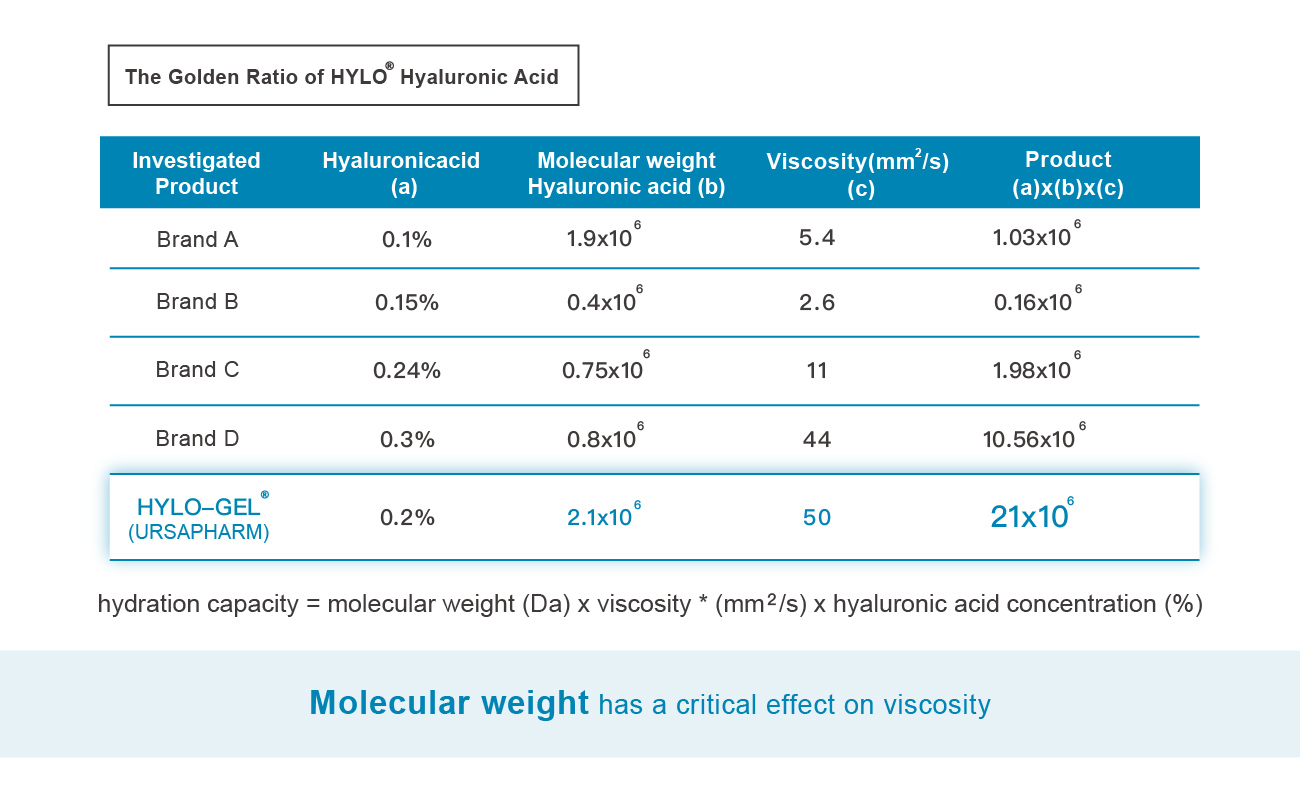
Hyaluronic acid molecules are capable of genuinely attracting water molecules and increasing hydration. When the individual molecule size is larger, the number of water molecules attracted also increases.
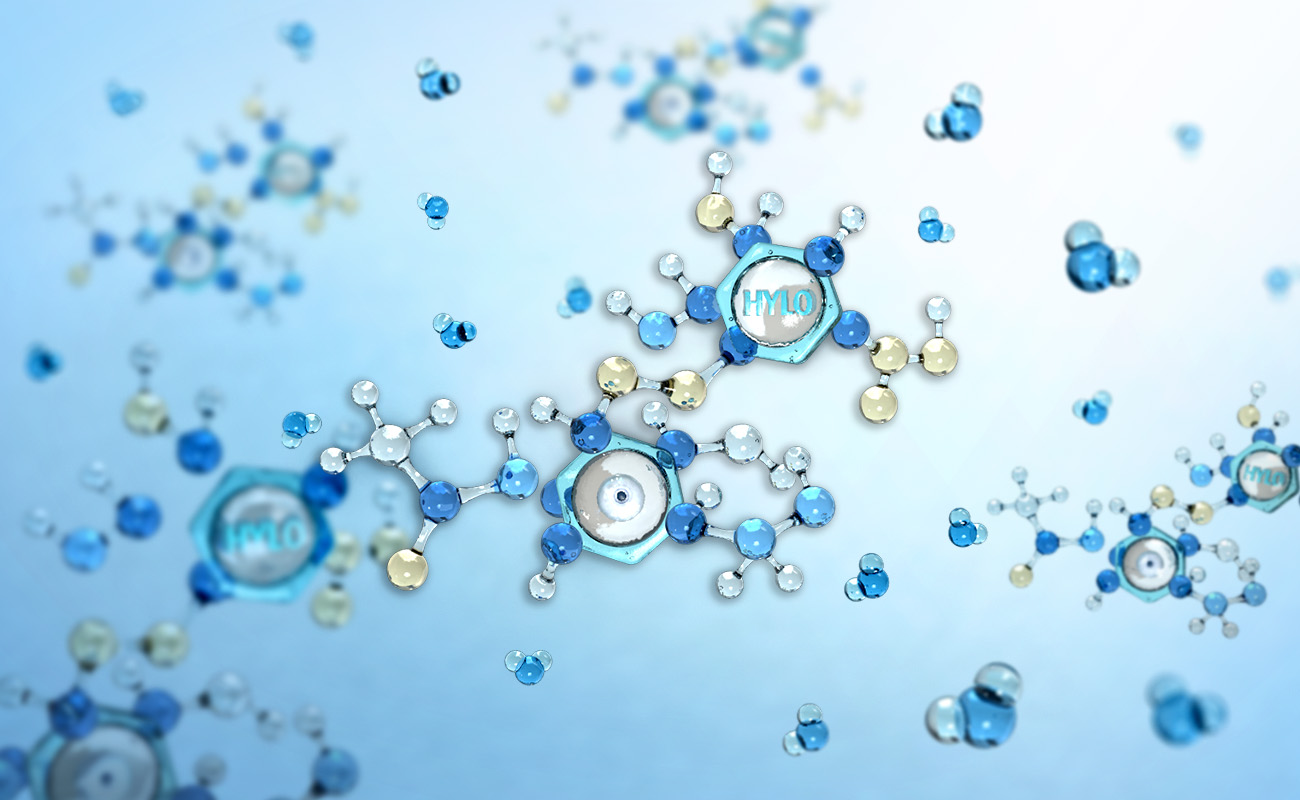
A wide variety of hyaluronic acid eye drops are available in the market, most of which boast high concentrations as a measure of their moisturizing and water-locking efficacy. However, research has shown that excessively high concentrations do not provide additional hydration and can lead to blurred vision for patients.
Clinical data on the effect of hyaluronic acid on improving tear film
1. Attracting water molecules, thickening and stabilizing the tear film
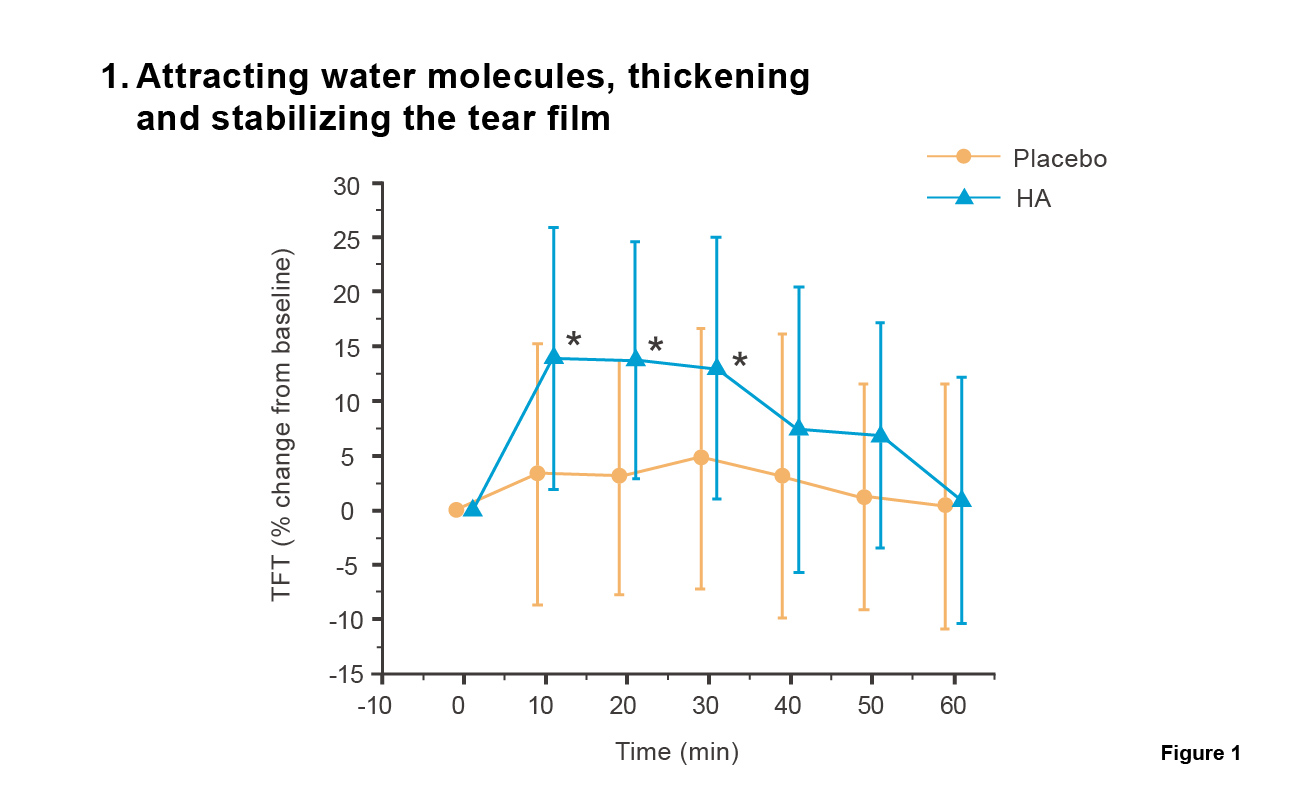
The figure above shows the effects of hyaluronic acid (HA) or placebo on tear film thickness as assessed with OCT. Data are presented as % change over baseline (means ±SD; n=16)
OCT= Optical Coherence Tomography (OCT) for retinal vasculature scanning;
TFT= Tear film thickness
2.Reducing the effects of mechanical trauma to the ocular surface by lubrication
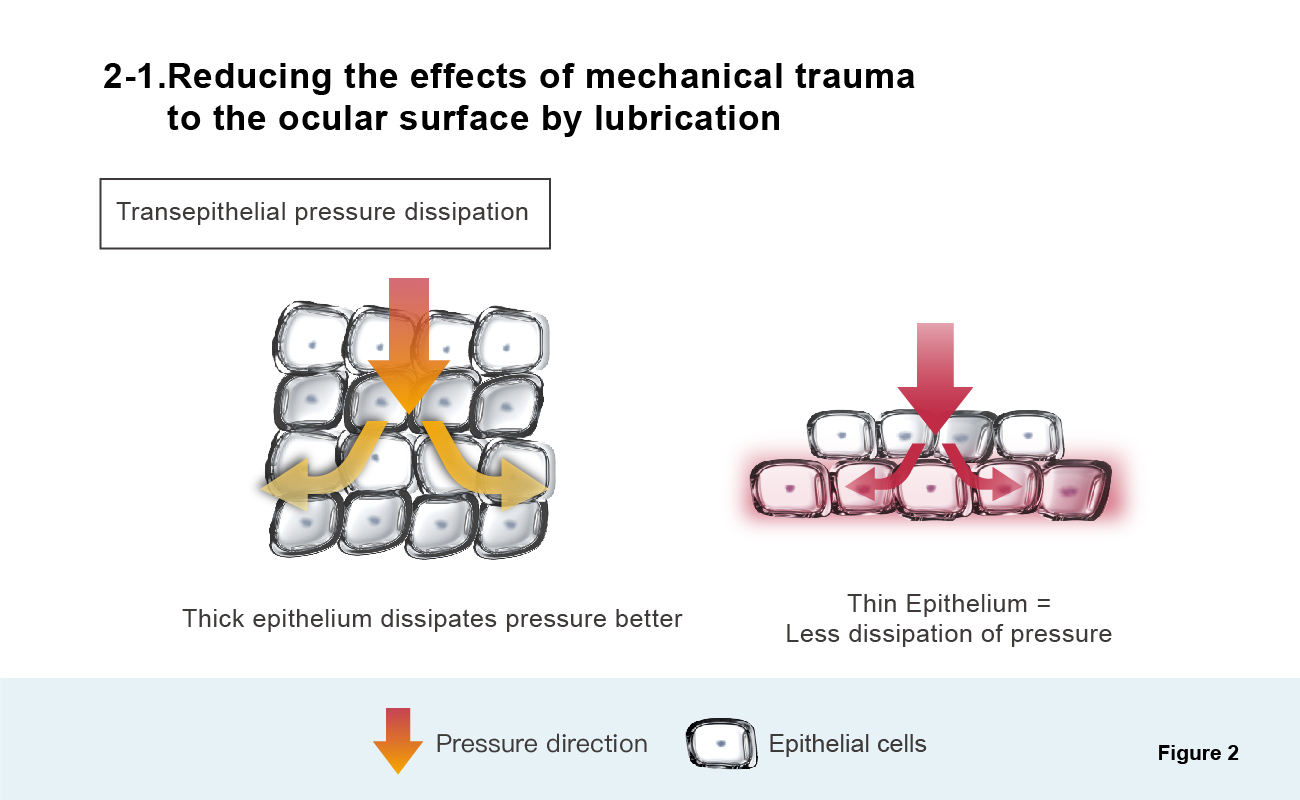
The figure above shows thinning epithelium improves pressure dissipation more effectively compared to multi-layered normal epithelium, as any pressure is directly transmitted to the basal cell layer. However, this can lead to side effects such as inflammation and pain.
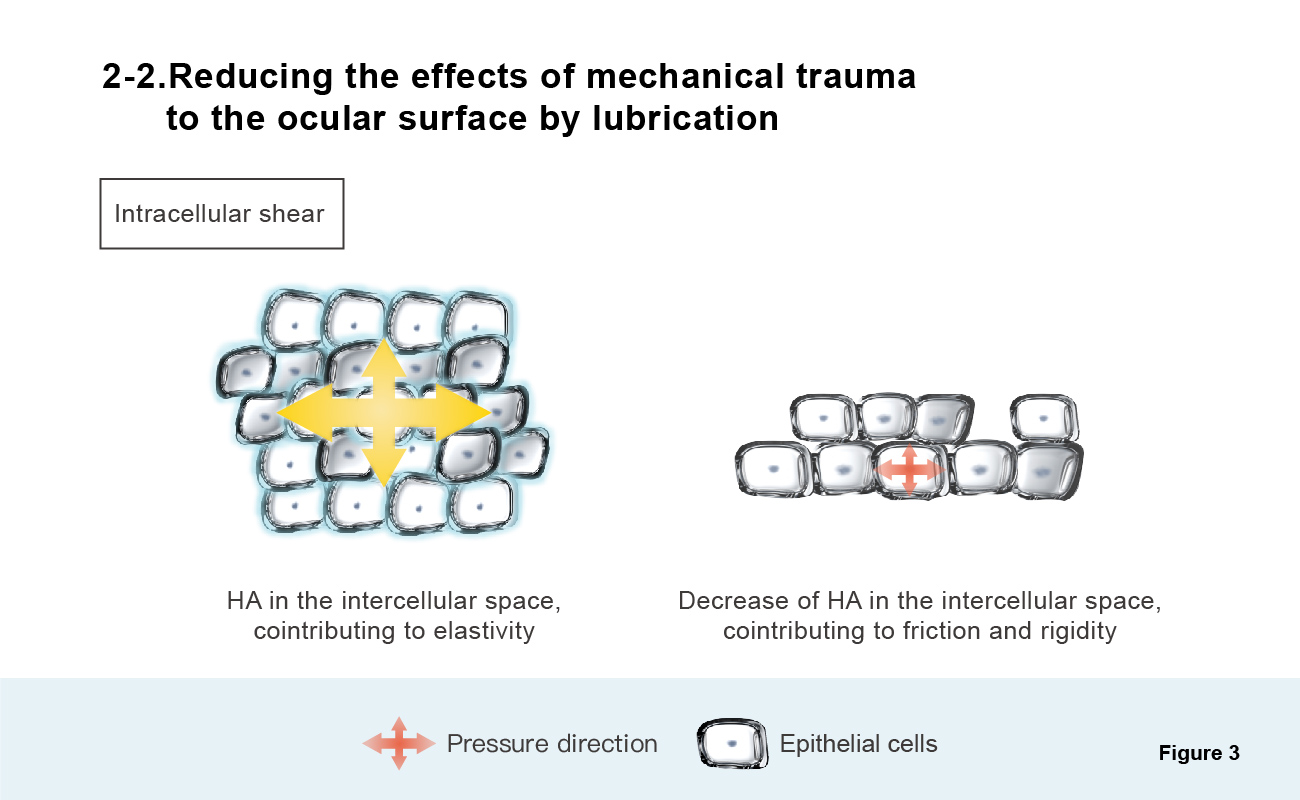
The figure above shows the diagram above, which illustrates the cellular motility and elasticity of normal epithelial tissue under pressure, as well as its response in the presence of a normal extracellular matrix.
3.Contribution for re-epithelialization
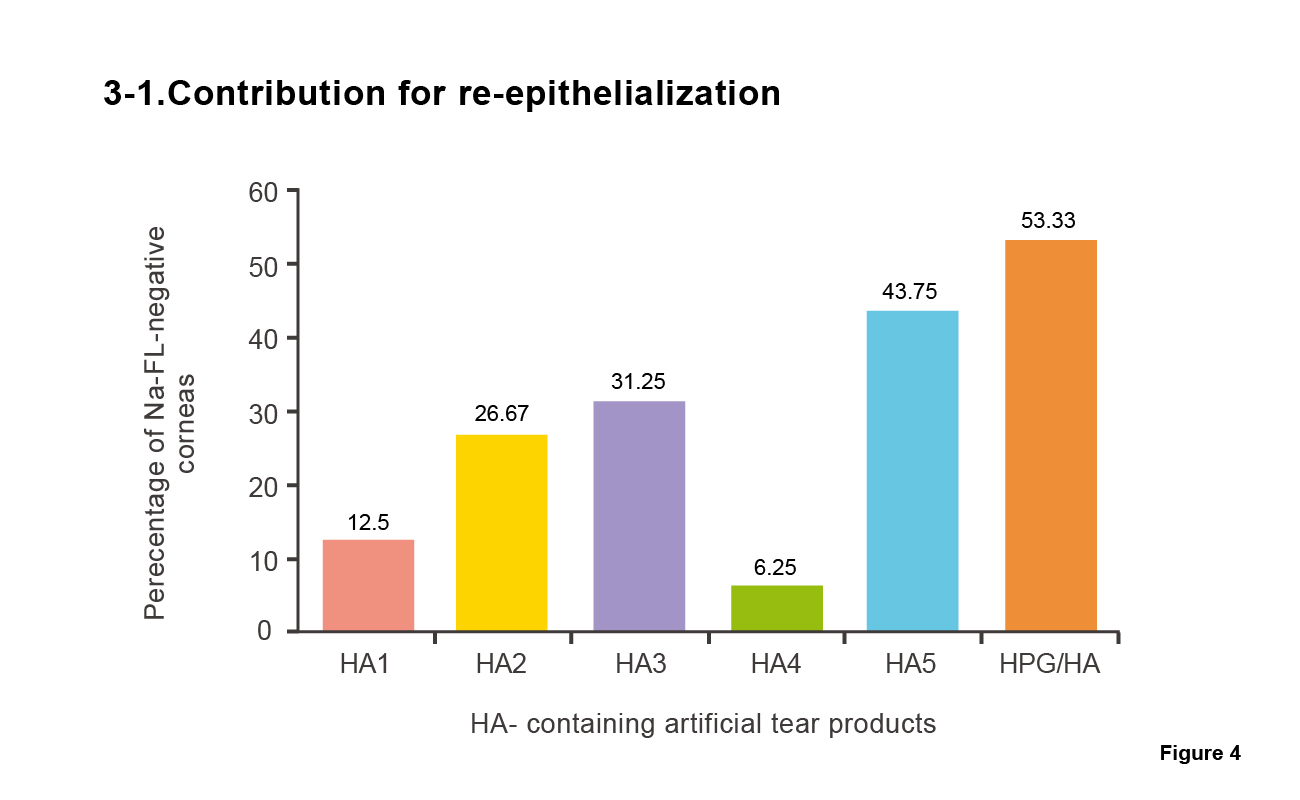
The number of reepithelialized corneas in each treatment group 24 h post debridement.
FI= fluorescein;
HA= hyaluronic acid;
HPG= hydroxypropyl-guar;
Na= sodium
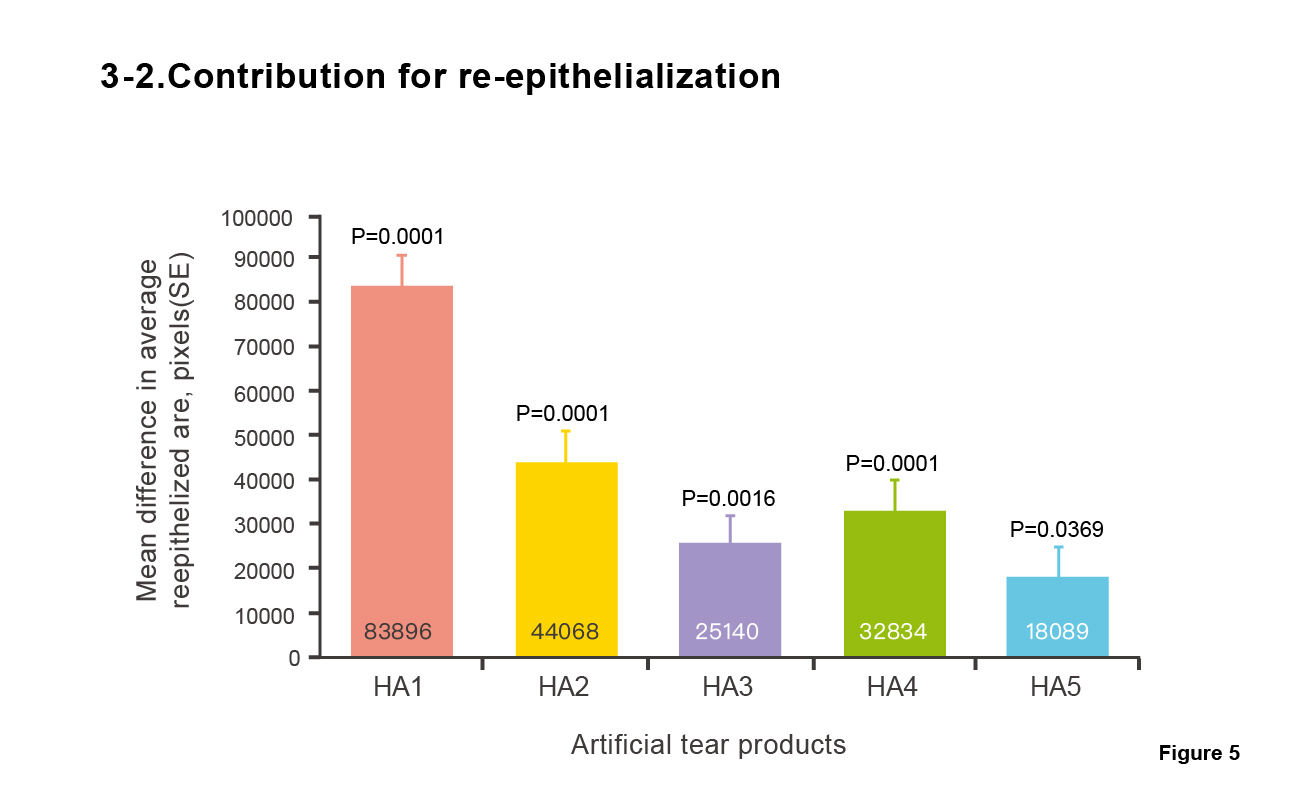
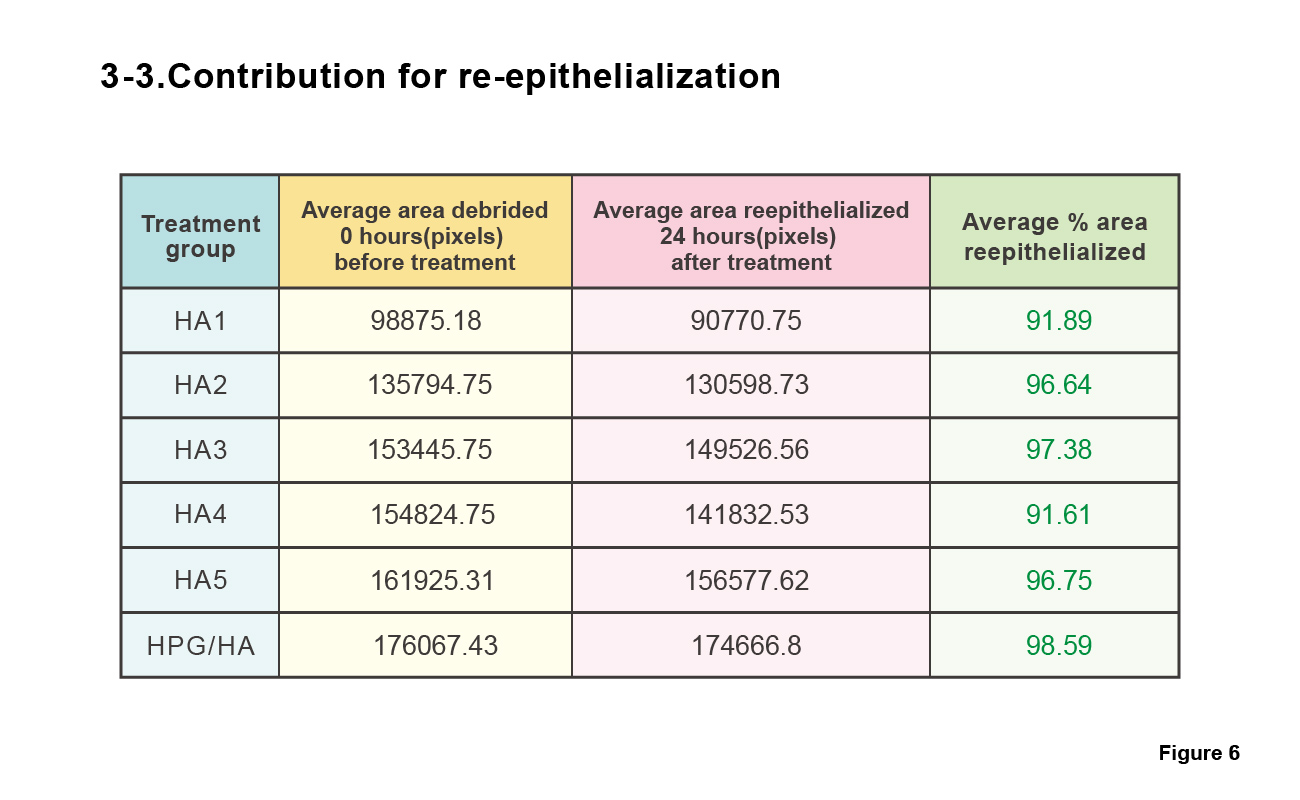
The figure above shows the difference in the average area of reepithelialization 24 h post debridement across treatment groups when compared to HPG/HA. The mean difference in the average re-epithelialized area was calculated and presented by the number of pixels. The statistical difference in the area of reepithelialization between the HPG/HA group and HA-containing products was evaluated using a 1-way analysis of variance model. A P value of less than 0.05 was considered statistically significant. The table provided the average and percentage area of reepithelialization in each treatment group 24 h after debridement.
HA= hyaluronic acid;
HPG= hydroxypropyl guar;
SE= standard error
4.Combination of HA and hyaladherins activate the wound healing signals
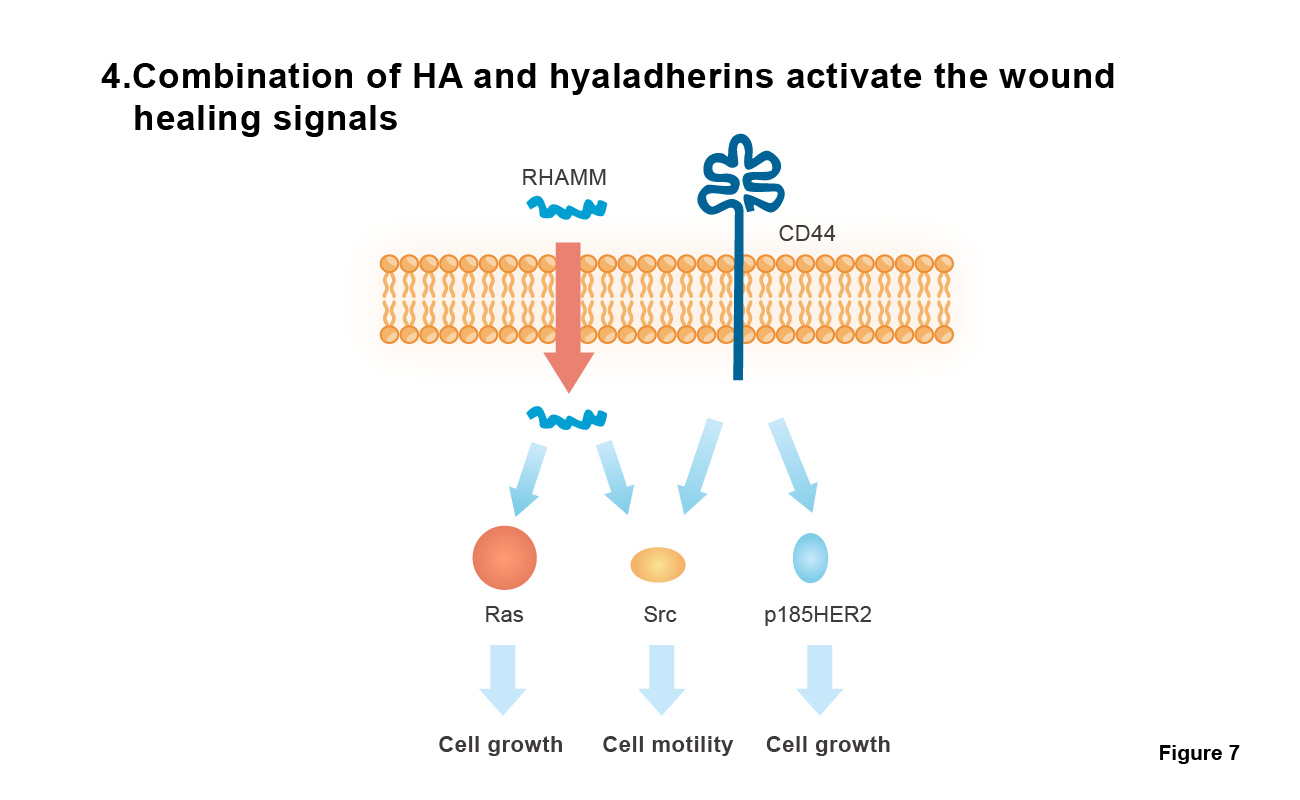
The figure above shows the main signaling pathways activated in the cells by hyaluronic acid.
RHAMM= receptor for hyaluronan-mediated motility;
CD44= antigen, a type 1 transmembrane receptor;
Ras= protein;
Src= kinase;
p185HER2= tyrosine kinase p 185 human epidermal growth factor receptor 2
5.Reducing evaporation from the ocular surface
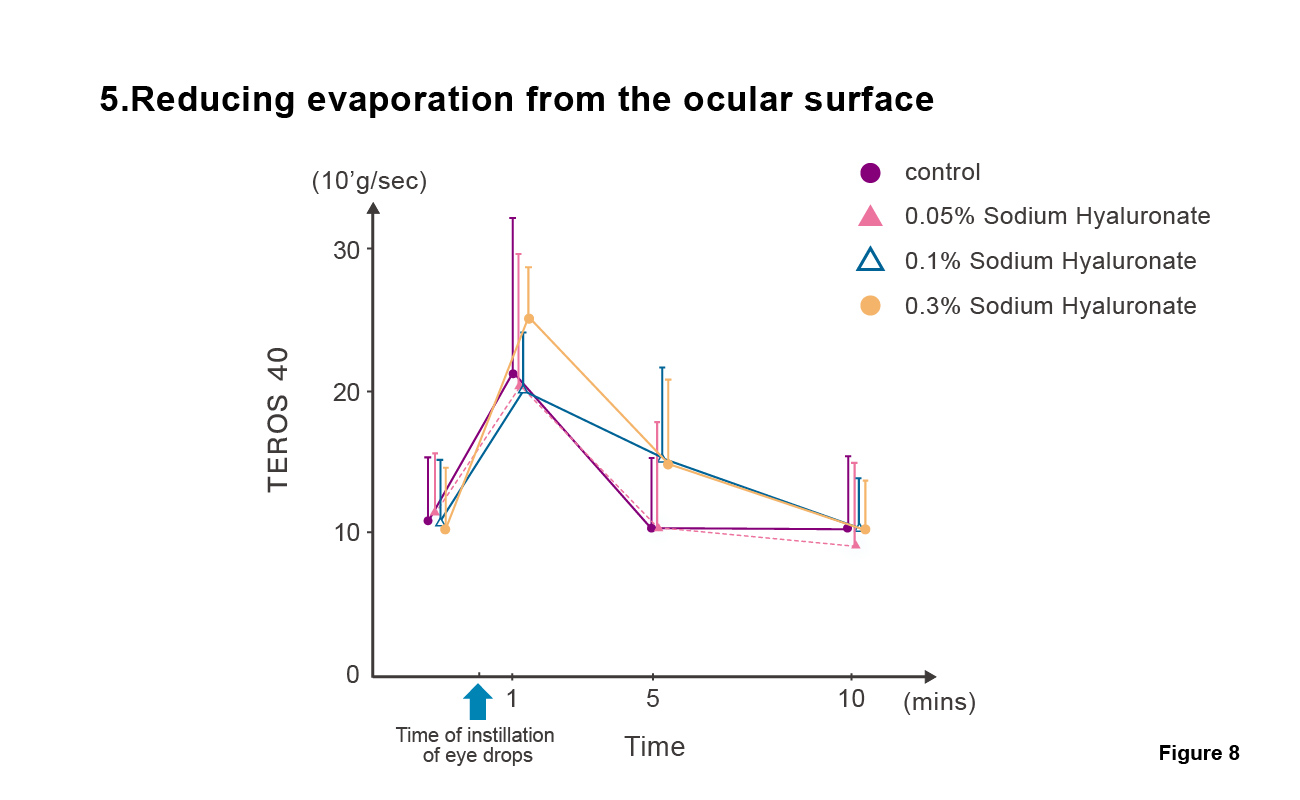
The figure above shows the changes in TEROS 40 before and after the application of various eye drops in dry eye patients (n=10). TEROS 40 increased 1 min after applying all eye drops but quickly decreased to original levels with artificial tears or 0.05% sodium hyaluronate. In contrast, the 0.1% and 0.3% sodium hyaluronate drops maintained a higher level of TEROS 40 5 min after the application.
Arrow= time of instillation of eye drops;
TEROS 40 = tear evaporation rate at 40% ambient humidity
6.HA could improve tear film break-up time in patients with DED
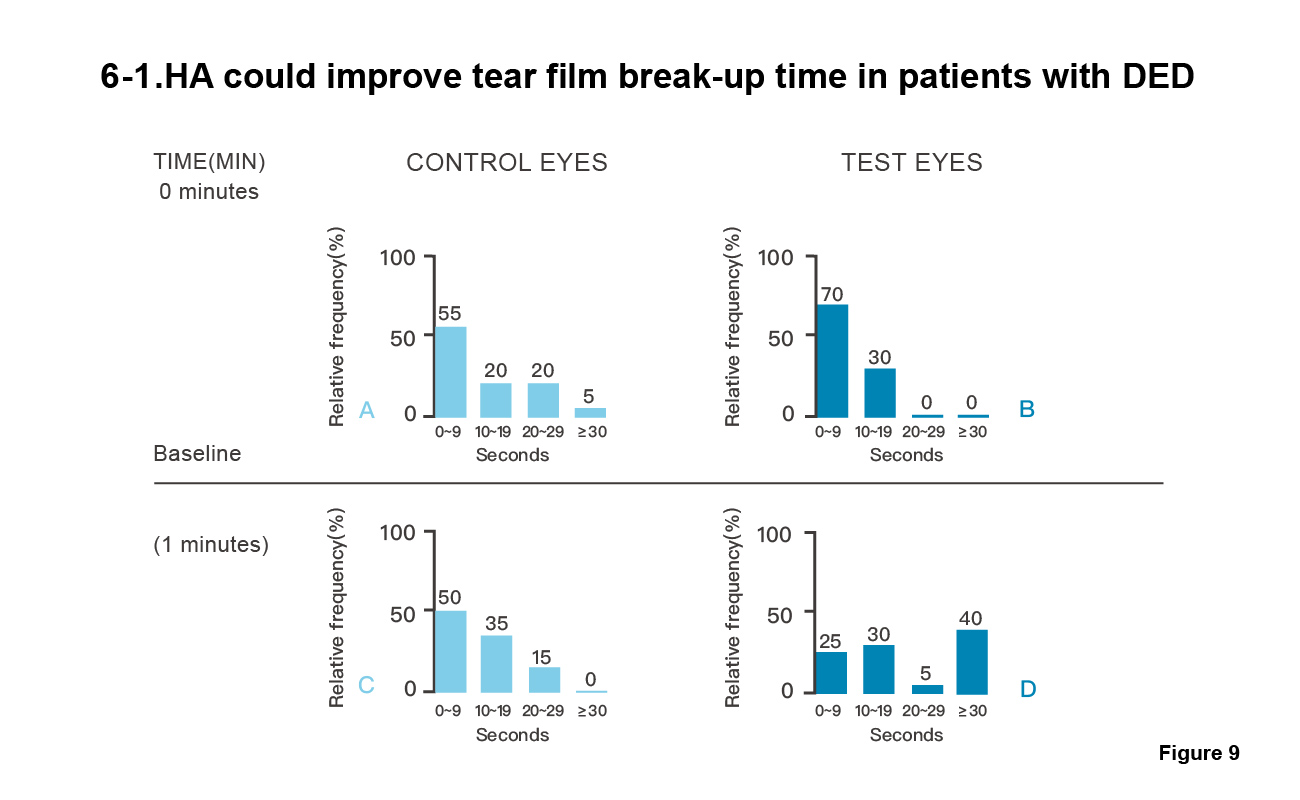
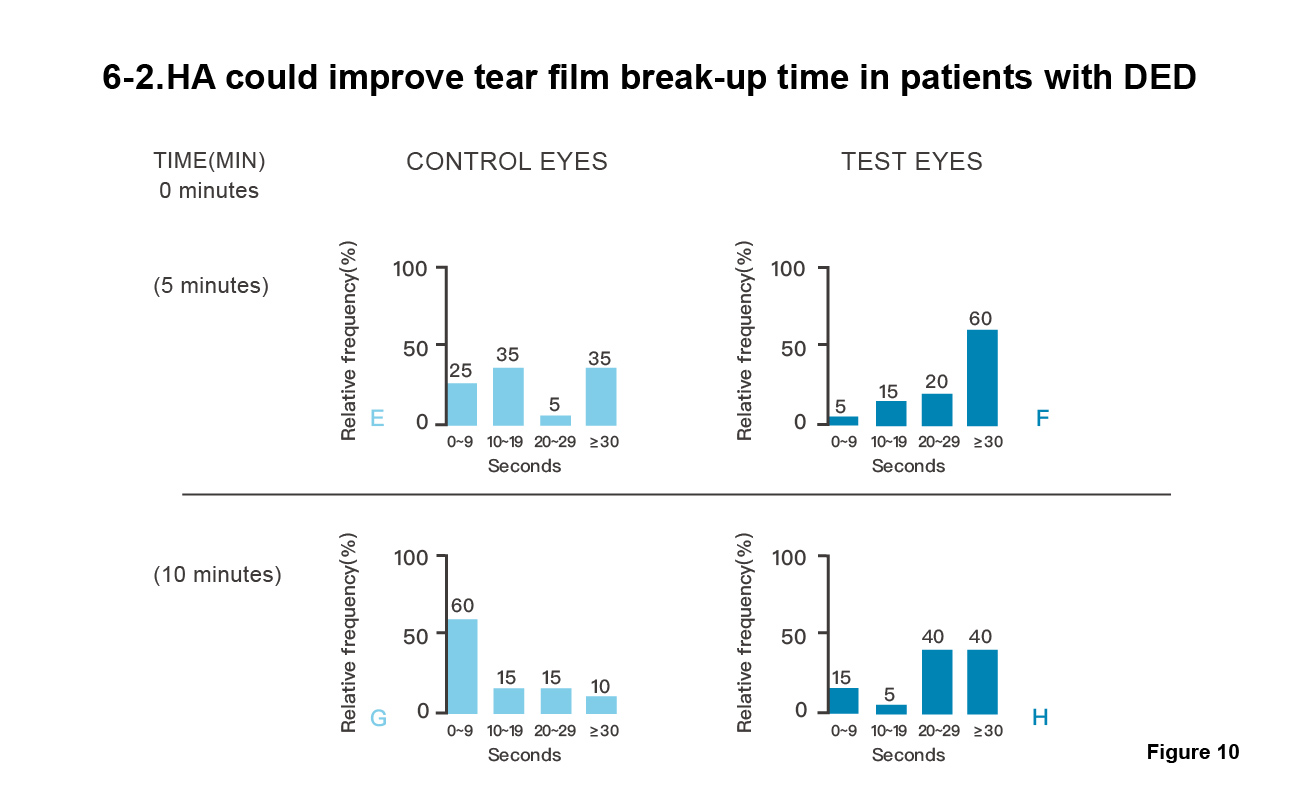
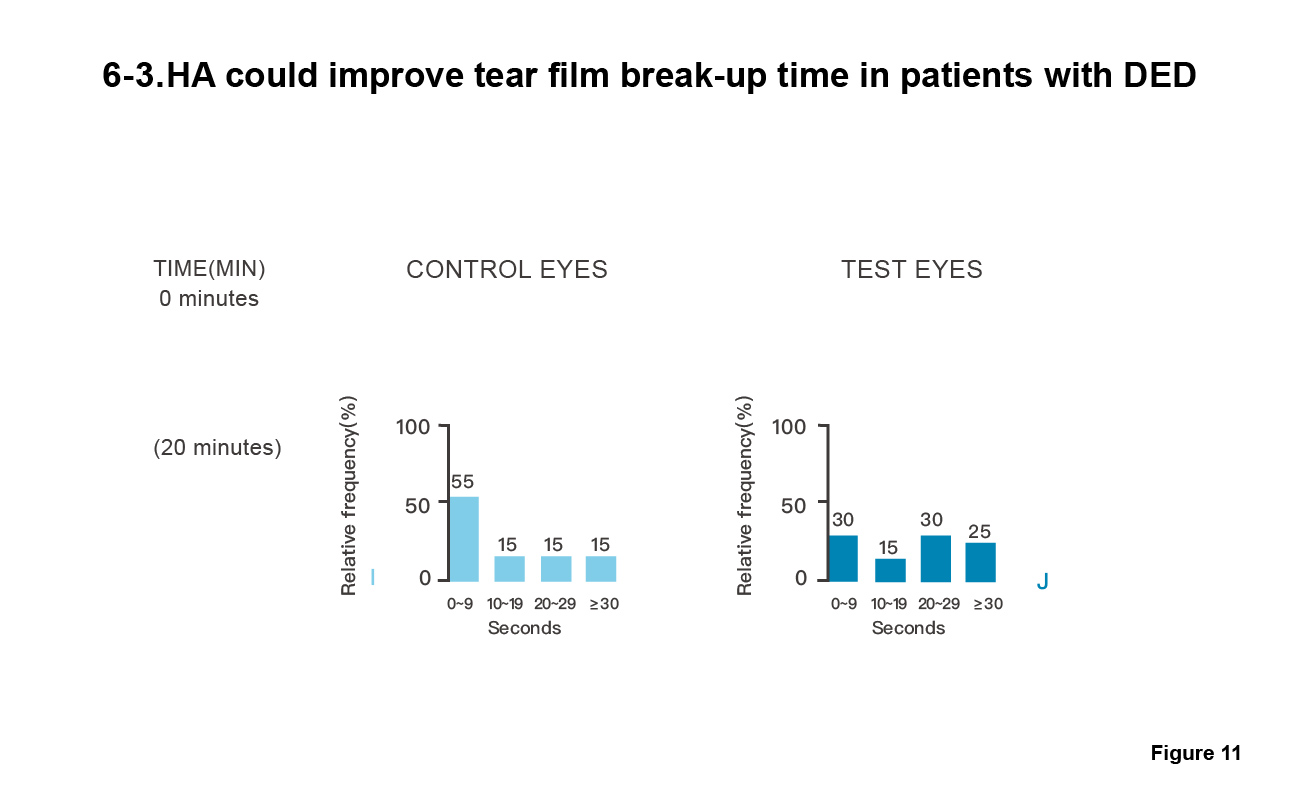
Ten dry eye patients were involved in this test.
The figure above shows the frequency distribution of the non-invasive break-up of control and test eyes before and after treatment with normal saline and unpreserved sodium hyaluronate (0.1%).
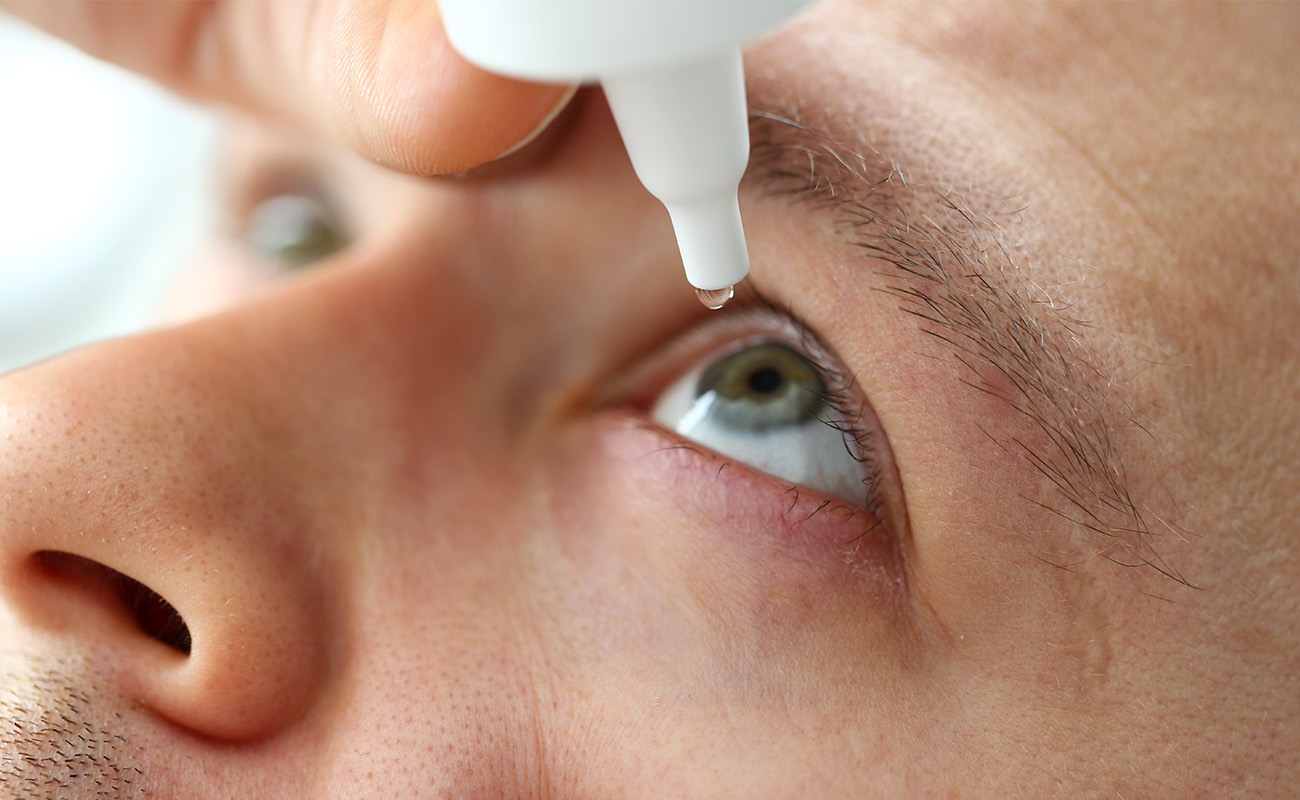
Below is a recommendation for Ursapharm Hylo-Gel and Hylo series as a daily moisturizer to alleviate eye fatigue:
- Preservative-free and patented bottle design: Using the COMOD®-System patented technology, the eye drops are kept in a sterile state and sealed environment without the need for preservatives, maintaining the quality of the eye drops.
- Patented Hylo® hyaluronic acid: It is a hydrophilic molecule that can adsorb in water, forming a protective film on the eye’s surface. This helps maintain moisture and hydration and improves the tear film’s stability, helping protect the eyes.
- Drop-by-drop dosage Design: The COMOD® dosage system makes dispensing precisely one drop per pump stroke possible. This means the contents go a long way. The drop dispensed is the same size, producing a constant, reliable effect.
